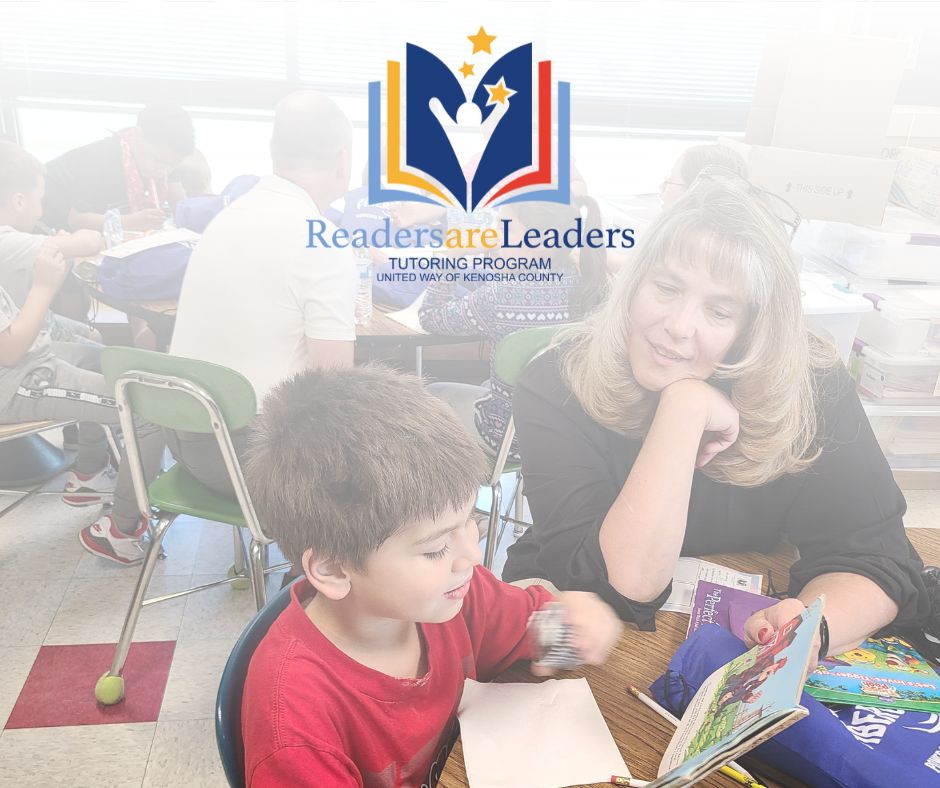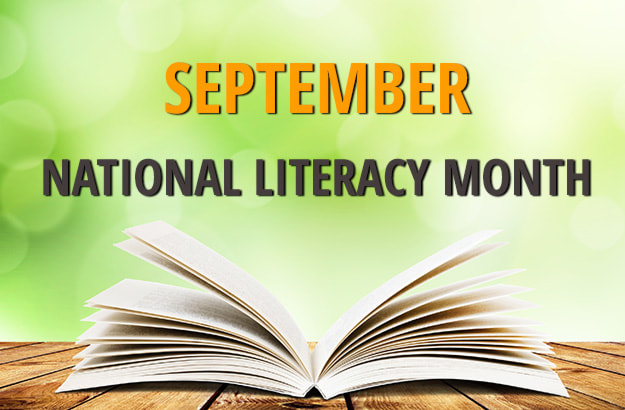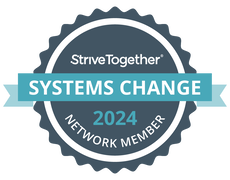|
Early grade reading lays the foundation for lifelong success, yet only 32% of fourth graders nationwide reach proficiency levels.
Exciting progress is happening! As part of the Cradle to Career Network, Building Our Future is proud to partner with the Wisconsin Reading Corps. Our collaboration with them and local schools has led to over 73% of tutored students exceeding growth targets. Discover more about our collaboration and other impactful initiatives nationwide in StriveTogether’s 2023 annual impact report. In Kenosha County, the alarming reality is that two of three third graders struggle with reading proficiency. But here’s the good news: You have the power to help reverse this crisis.
By dedicating just one hour per week, you can help students become more confident and capable readers. Readers Are Leaders tutors spend time with students practicing literacy skills through reading, writing, and other phonics activities. As United Way of Kenosha County enters their eighth program year, in partnership with the Kenosha Unified School District, RAL is on a mission to enlist over 100 tutors to work with students across four schools: Brass, Forest Park, McKinley, and EBSOLA. Last year, students and tutors came together to read for approximately 800 hours, and we aspire to exceed these numbers for the 2023-2024 school year—with your support. No matter your background or experience, our students can benefit greatly from your presence. Our tutors come from diverse backgrounds, including college students and retirees. Rest assured, all the training and resources you need for success will be provided. Tutoring takes place during school hours, September/October through May. Volunteer recruitment will take place through mid-October. Complete the tutor interest form to get involved: https://www.kenoshaunitedway.org/readers-are-leaders-tutoring-program or for more information, email [email protected]. Did you know that third-grade reading proficiency is a crucial predictor of high school graduation and career success? It's the foundation upon which our children's future success is built. 🌟
During the early grades, children are learning the fundamental skills of reading. But it's after third grade that they start using these skills to comprehend more complex materials. 📖 The disparities in literacy that persist by third grade can have long-lasting consequences. That's why it's essential to ensure that our kids are proficient readers early on. 🚀 Our partnership is committed to making a difference in our community. We've worked hard to bring valuable resources like the Wisconsin Reading Corp to our district. 📚 We're proud to partner with United Way of Kenosha County to support the Readers Are Leaders program. We’re thrilled to be a thought partner with the Kenosha Public Library as they open the first Children’s Library. Together, we're aligning various activities to give our students the best possible support in literacy. 🤝 In 2022, we faced a significant challenge in Kenosha County. Only 31% of our third-grade students, which equates to 533 out of 1720 students, tested proficient or advanced in English Language Arts on the Wisconsin Forward Assessment. 📊 While this highlights the work that still needs to be done, it also reinforces the importance of our ongoing commitment to literacy and education in our community. We know that with continued efforts and partnerships, we can improve these numbers and provide a brighter future for all our students. 📚💪 Let's work together to raise these proficiency levels and ensure that every child in Kenosha County has the opportunity to succeed academically and in life. 🌟 #NationalLiteracyMonth #BuildingOurFuture #ReadingMatters #LiteracyForAll #Kenosha |
Categories
All
Archives
May 2024
|



